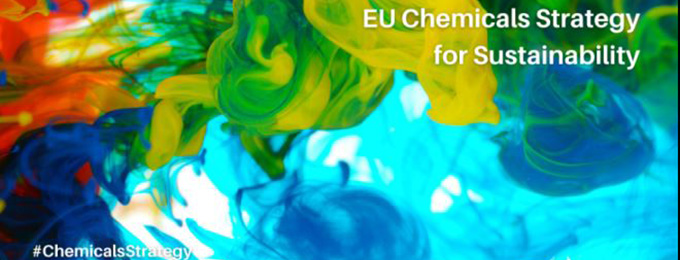Research and innovation have to help creating better chemicals for a cleaner and healthier planet. The European Commission also plans to improve biomonitoring.
As part of the European Green Deal, the European Commission (EC) adopted on 14 October 2020 the Communication “Chemicals Strategy for Sustainability”. The strategy is linked to the EC’s Circular Economy Action Plan and the New Industrial Strategy and aims to pave the way towards a new generation of chemicals that should become the building blocks of low-carbon, zero pollution, energy- and resource-efficient technologies, materials and products. Even though not all of today’s chemicals raise the same concern, human biomonitoring studies point to a growing number of hazardous chemicals in human blood and body tissue, including pesticides, biocides, heavy metals, and plasticisers. Furthermore, the EC views chemical pollution as one of the key drivers that are putting planet Earth at risk, impacting and amplifying crises such as climate change, degradation of ecosystems and loss of biodiversity.
The EC argues that there is considerable political backing for more sustainable chemicals: The Communication finds that 84% of Europeans are worried about the impact of chemicals in everyday products on their health. 90% are worried about the impact chemicals have on the environment. The EC’s Chemicals Strategy is also of great economic significance as the EU is the second largest producer of chemicals in the world, accounting for 16.9% of global sales in 2018. Chemical manufacturing is the fourth largest industry in the EU, including 30’000 companies that are directly employing approximately 1.2 million people. 95% of these companies are SMEs. Thus, the EU strategy aims to reach several goals: Striving for a toxic-free environment due to sustainable chemicals, enabling the EU’s chemical industry to compete successfully in international markets thanks to a new generation of chemicals, and to strengthen the EU’s strategic autonomy when it comes to chemicals that are essential, for instance for the health sector.
The EC states in the Communication that regulatory and market initiatives have to a large extent already been established, but substitution of most harmful substances has not occurred at the expected pace. Thus, the envisaged transformation of the sector needs stronger policy and financial support, especially for SMEs. The Commission argues that a concerted effort of authorities, businesses, investors and researchers is needed. The Next Generation EU recovery instrument for tackling the COVID-19 crisis offers an opportunity to provide EU Member States with additional funding via the Recovery and Resilience Plans to facilitate the green and digital transition of EU industries, including the chemical sector.
Incentivising industry to innovate and invest in the development of new chemicals is key. Thus, the EC plans to identify strategic value chains, in particular the ones that are relevant for the green and digital transition. Furthermore, interregional collaboration along sustainable chemicals value chains will be promoted through smart specialisation. The EC states that knowledge on chemical use and exposure is fragmented, in particular as it relies on industry to provide accurate information. The sheer number of chemicals on the market represents an immense knowledge challenge that needs to be addressed to increase awareness of potential risks. In partnership with Member States, the EC plans to continue fostering research and (bio-)monitoring of chemicals in humans and ecosystems to understand and prevent risks, and drive innovation in risk assessment and regulatory science through Horizon Europe. The Chemicals Strategy foresees therefore to provide financial support for EU-wide (bio)monitoring capacities, complementing ecosystem monitoring initiatives. Furthermore, the development of an EU early warning and action system for chemicals shall ensure that EU policies address emerging chemical risks as soon as they are identified by monitoring and research. The EC also plans to create a framework of indicators to monitor the drivers and impacts of chemical pollution and to measure the effectiveness of chemicals legislation.
The EC will establish and update a research and innovation agenda for chemicals, which will be driven by an EU-level Coordination Group. The group shall also promote the regulatory uptake of research findings. Moreover, the EC puts emphasis towards full replacement of animal testing and states that safety testing and chemical risk assessment need to innovate in order to reduce dependency on animal testing. The move away from animal testing should, according to the EC, be supported by fostering multidisciplinary research and digital innovations for advanced tools, methods and models, and data analysis.

